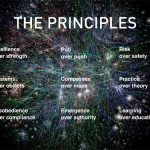A secret network of 20 roadside listening stations across the UK has confirmed that criminals are attempting to jam GPS signals on a regular basis, a conference at the National Physical Laboratory, in London, will hear later today. Set up by the government’s Technology Strategy Board (TSB) and run by Chronos Technology of the Forest of Dean, UK, the Sentinel network has sensed an average of ten jamming incidents per month since September 2011. “Our jamming sensors use very small GPS receivers like those in cellphones. They are installed at locations where our partner companies have experienced unexplained outages to their professional GPS equipment,” says Chronos managing director Charles Curry. “The jammers sweep a signal through the GPS band around 1.5 gigahertz and we log the impact that has on the local GPS signal.” One victim of these GPS outages was Britain’s national mapping agency, Ordnance Survey.
One Per Cent: GPS jamming: a clear and present reality
A future in which national borders are rerouted through the careful recalibration of the cartographer’s GPS signals.
Article also covers potential “GPS vigilantes”, placing jammers around towns which want to keep large satnav-guided trucks away, and the necessity for GPS signal for cell towers and banking systems…
(via new-aesthetic)

